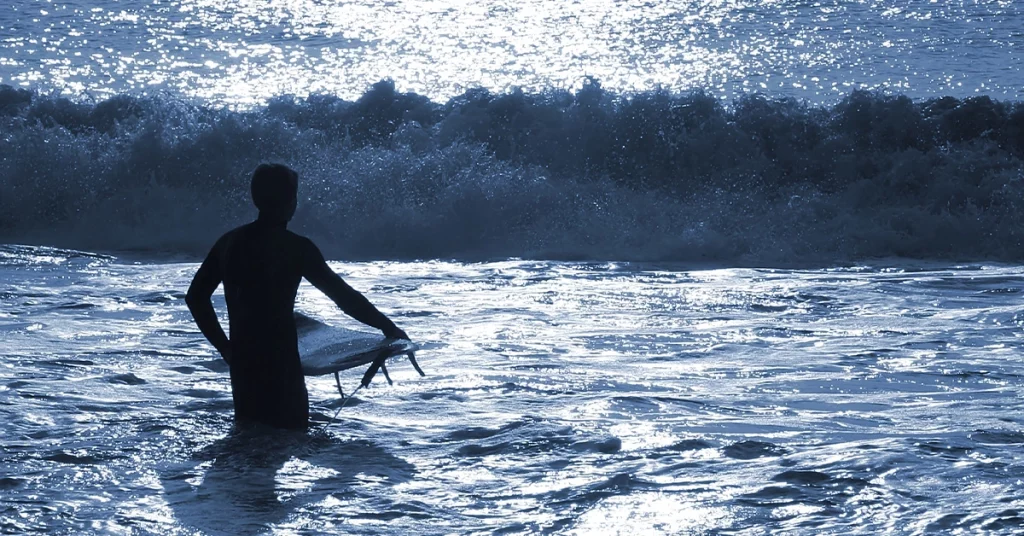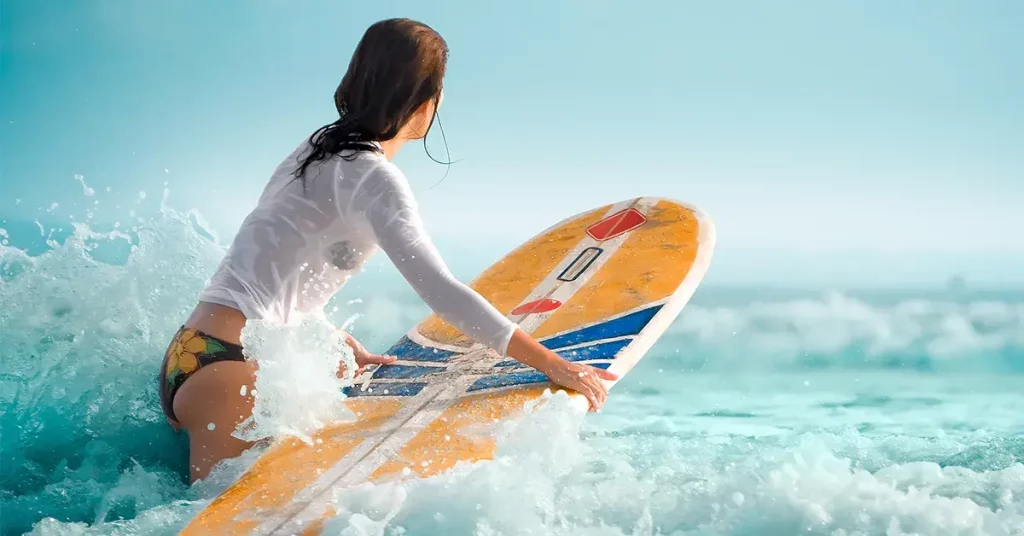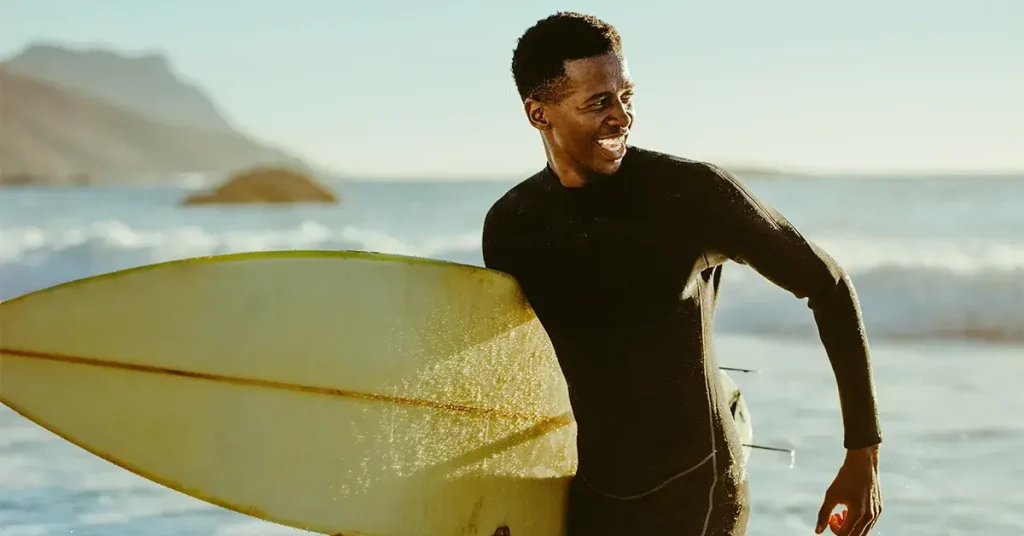Night surfing is an intense experience, no matter how wild or fun. Surfing in the dark, without the sun to guide you, is hard enough. All the dangers that come with surfing, in general, are doubled when I decide to surf at night, so I plan accordingly.
Surfing at night presents a few problems like lack of appropriate lighting. So, that raises the question, “Why would someone surf at night?”
Why Do Surfers Surf At Night?
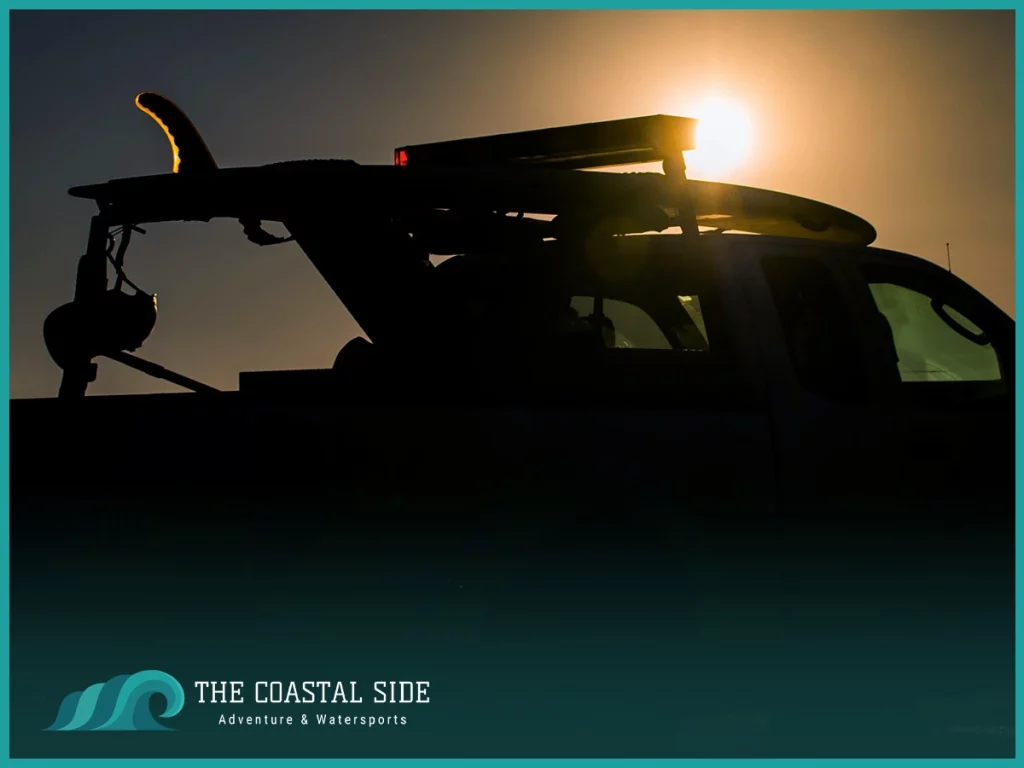
As many times as people, and Hollywood, show the dangers of night surfing, I always wonder why risk it? Night surfing is popular, not only because of the serenity it provides but also for the unique challenge.
There are fewer people around at night, meaning surfers at night get more chances and freedom to surf what and where they want. It is also notorious for the thrill of executing a move with minimal lighting.
Is It Safe To Surf At Night?
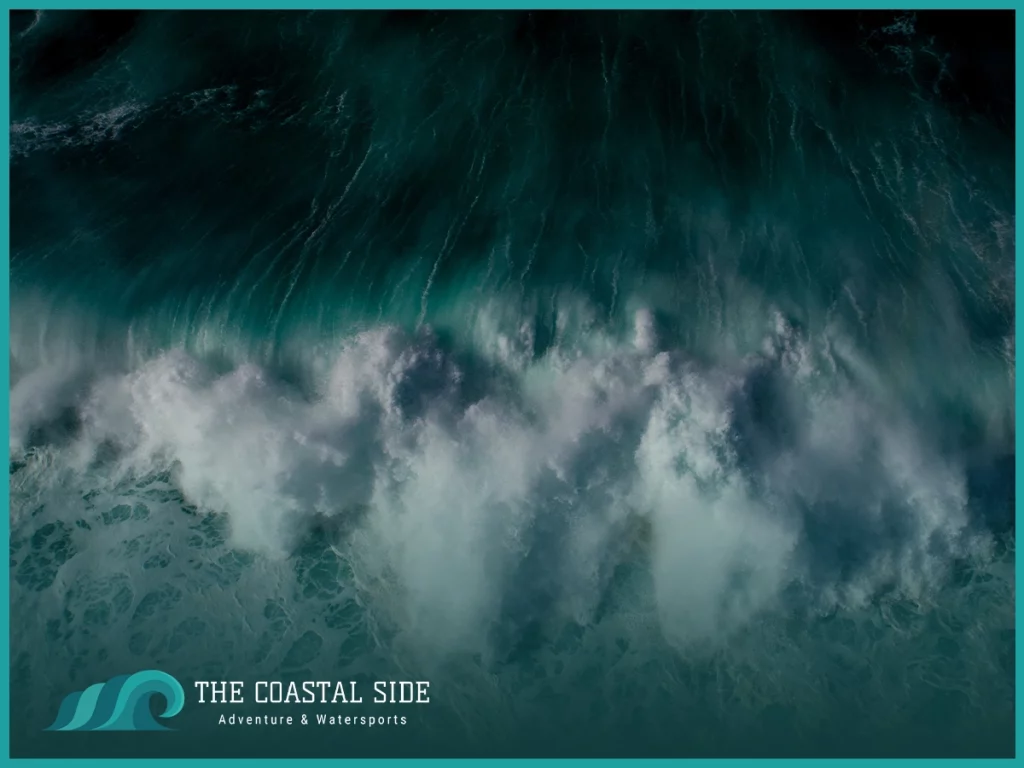
Surfing at night is a lot more dangerous than surfing during the day. Following safety guidelines, such as these tips, can ensure that you are as safe as possible. There are dangers to anything you do, and surfing is not any different. Here are five tips to keep in mind when surfing at night:
Tip 1: Have Some Light
While it seems simple, I need a sufficient light source to stay safe when night surfing. I struggled with making sure I could see until I tried night surfing during a full moon. When there is a full moon, we do not need as much artificial light as the moon produces enough light for us to see. When the moon’s light is weak or when clouds come out, surfing can get a little tricky.
The main concern that makes surfing at night dangerous is the low visibility. Even with a clear sky, night surfing presents many problems. Lack of proper lighting means that you cannot see your beach marks, making it much easier for someone to get lost.
Night Time Surfing Gear
As light is vital to being safe when night surfing, many surfers have come up with various ways to provide much-needed light. Glow sticks create light in a fun way, though they typically do not produce enough. Surfboard mountable LED lights are perfect for night sessions! Utilize man-made sources like well-lit piers to provide sufficient light to surf safely.
Regardless of the strength of the moonlight and lighting, a good wetsuit is also essential to a successful night of surfing, especially as the temperature drops. I always make sure that my board is good to go and that my leash is in good condition.
Locations To Surf at Night
Santa Monica Pier, Casino Pier, and San Diego are some of the places in the U.S. that support night surfing. Rio De Janeiro, Lima, Bali, Hawai’i and many other places around the world provide opportunities to ride the waves at night.
Places like surf resorts provide lighting to keep surfers as safe as possible to enjoy the experience. Areas that are well-developed or have large populations tend to have lots of lighting. Lit areas include boardwalks and piers, but carnivals, car parking lots, construction sites, and even street lights can all provide lighting.
Piers are typically something surfers avoid when the sun is up, but night surfers tend to stick close to them. The light that piers produce draws surfers closer, but it is wise to be cautious about how close and when to surf near them.
Tip 2: Communication
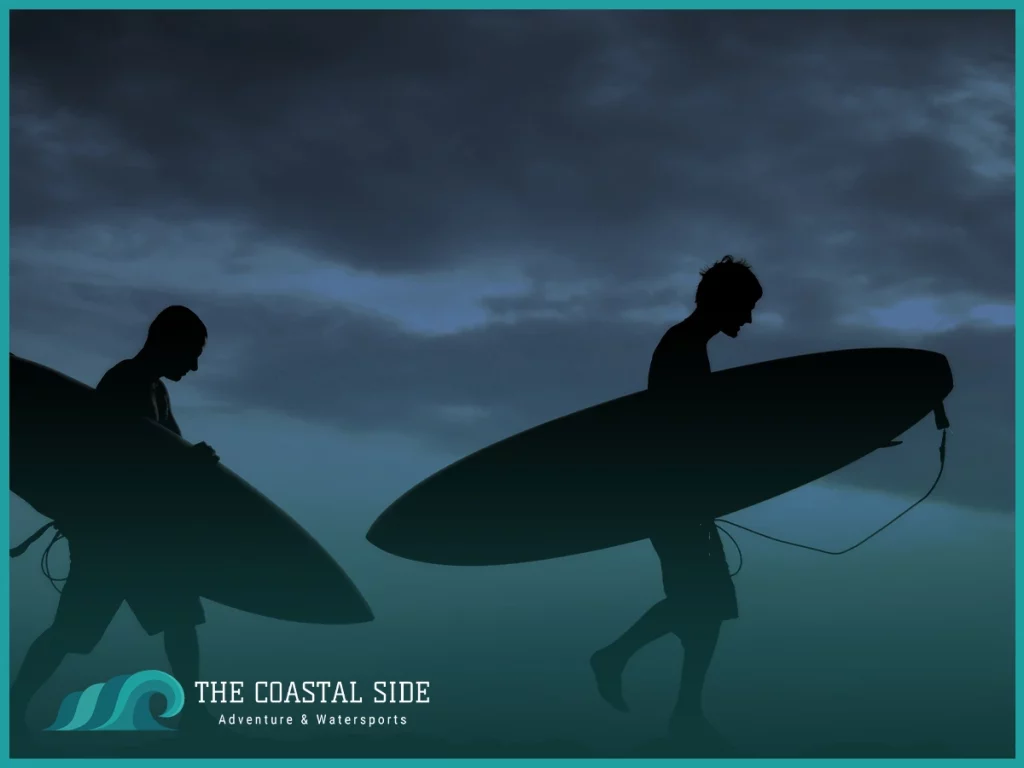
Friends are good to have for any situation, especially when surfing, but they only keep each other safe as long as they stay in constant communication.
It is common knowledge never to surf alone. Community is even more essential when it is dark. Talking consistently allows each person surfing to make sure everyone is alive and doing good. Try to choose the best people you can surf with; beginners should not be trying to learn at night.
The darkness that surfing at night provides is part of the fun, but it is much easier to get lost or get hurt without the sun to light the way. There also should be people on the beach, whether they are surfing or not, to be able to call for help as needed.
Tip 3: Stick to What You Know
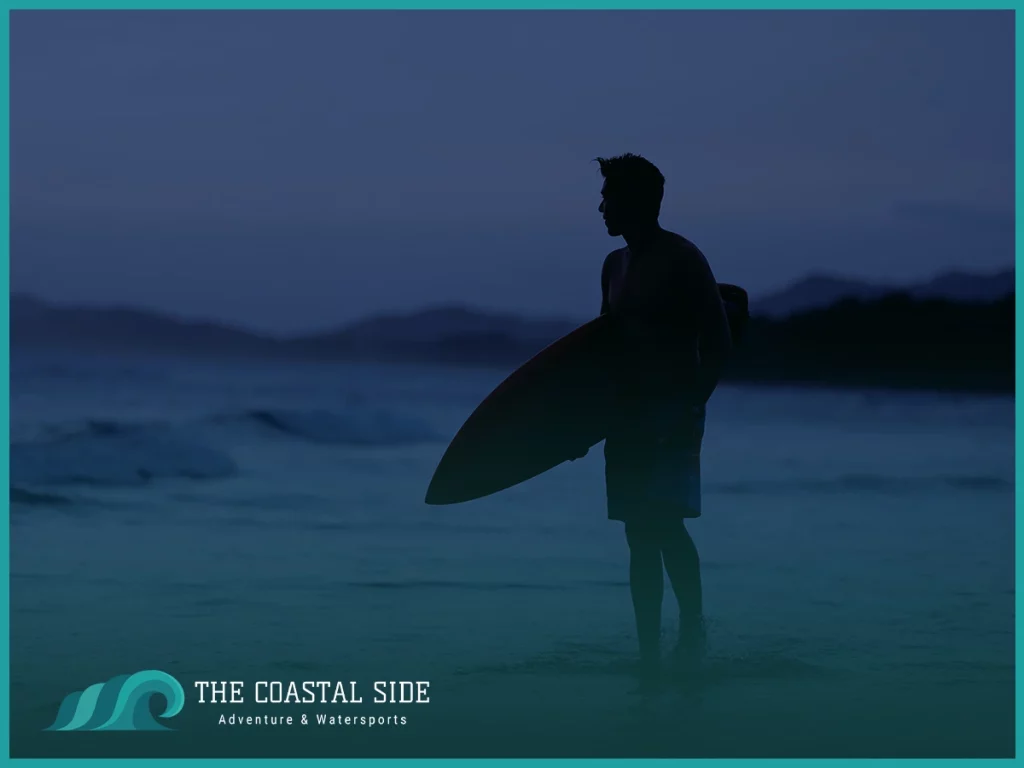
Surfing at night is not the time to try new things. The best way to start is by picking surf spots that you already know very well. Know your surf breaks and swell, and select the right waves.
Familiarity is a big part of successful night surfing, especially the first few times. I started night surfing at home at beaches that I had surfed many times before, so I already was pretty experienced there.
Other Things To Avoid
If I avoid it during the day, I tend to avoid it doubly at night. This includes jumping off a rock, dock, or pier. If we are smart about the way we approach surfing, we can avoid most animal attacks. Making sure not to wear shiny jewelry as it can easily be mistaken for fish scales by aquatic animals– like sharks– is an essential part of staying safe.
We avoid river mouths because when one body of water meets another, especially the sea, the waves become hazardous and violent. Ocean currents can be strong by themselves but are even more heightened when met with another moving body of water.
Tip 4: Pick the Best Night
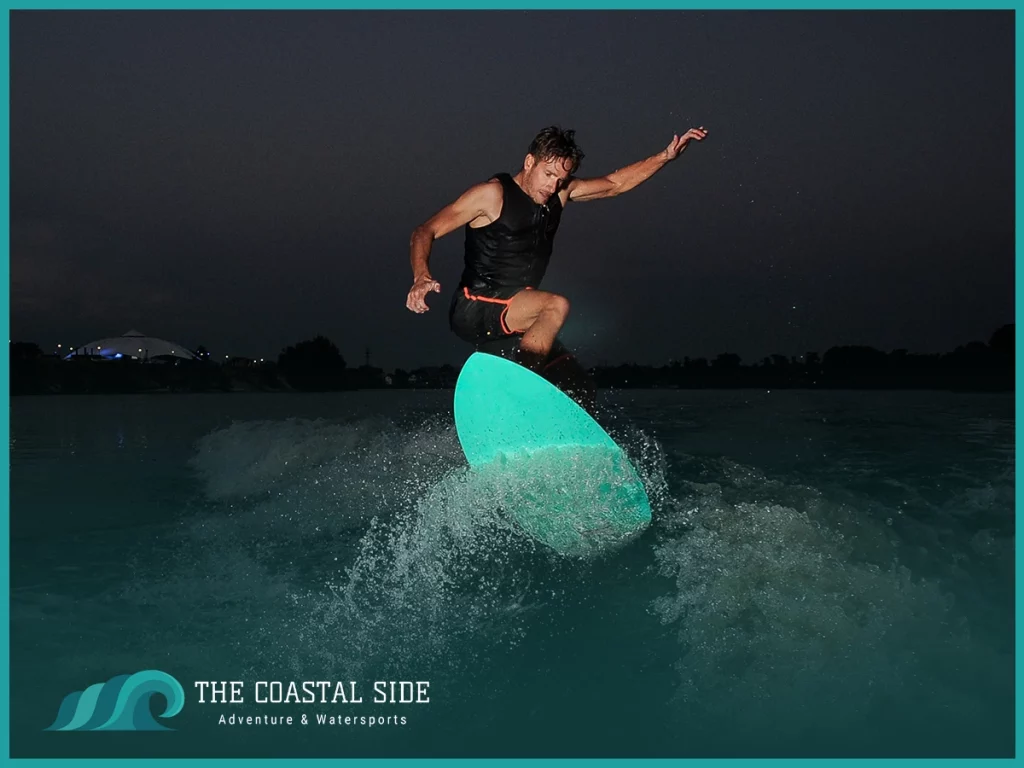
Wait for the perfect time to go night surfing. Full moons are usually the best nights to have that session we all desperately want. Pick a night with the best outside temperature and a clear sky.
The perfect surf spot is somewhere you know well that is over-abundantly safe in the daylight. These places are usually sandy points, mellow beach breaks, or areas featuring a sandy bottom over a reef or rocky bottoms.
Tip 5: Have a Plan and a Back-Up Plan

A solid plan includes knowing all that is necessary for the best experience. It includes keeping track of the time, waves, and area around where you are surfing. Be mindful of the ocean life by where you’re surfing and if there are reefs or rocks to look out for.
It also includes being safe. Whenever I am bleeding, even a small cut, I immediately get out of the water. Sharks and other ocean life may not be the biggest fears of a surfer, but it is better to be safe than sorry.
It does not matter where in the world or what sea I venture to, I understand that having the right tools are essential to have the best experience. A properly cared for surfboard and surf leash in good condition are vital parts of the plan (and backup plan) for surfing at night. I check all the surfing equipment before it is put into the car or dragged out to the beach.
Be Mindful of Weather
While clear skies are ideal, it is not the only time you can surf. The worst type of weather to watch out for is rain. Storms may make the waves gnarly but prove to be dangerous for surfers.
Surfing after storms is also dangerous because it can cause severe sickness, on top of the fact that the water is pretty gross from pollutants. Rain can attract fish and even sharks up towards the surface and sometimes closer to shore, so wait and be sure before surfing.
Summary
Night surfing is best when it is planned and executed well. Wait until the full moon and until the ocean calms down to catch the best wave. Do not surf at night without bringing some light. You can bring glow sticks, LED lights, or some other form of light, as long as it is bright enough to help you see the ocean clearly.
It may be dark, but wait for the right wave to surf. Hold fast to your plan, ensuring that you know the area you are surfing well. Bring some friends to surf along with, too, and don’t forget your GoPro and surfboard mounts to capture the experience!

